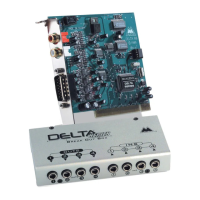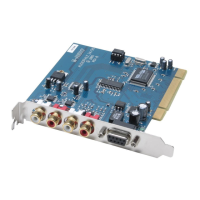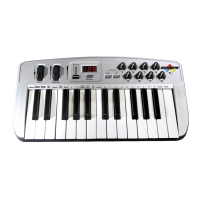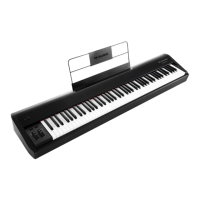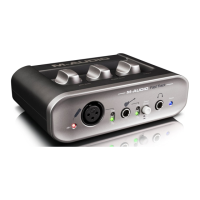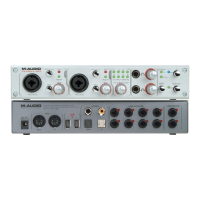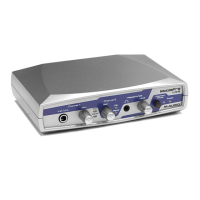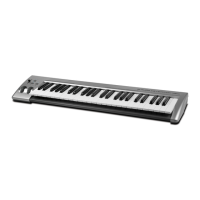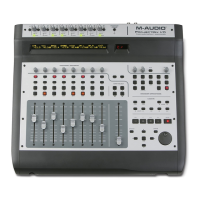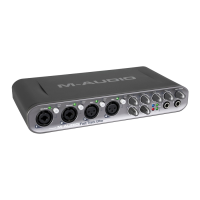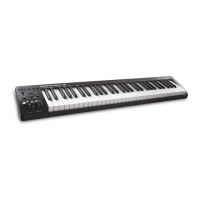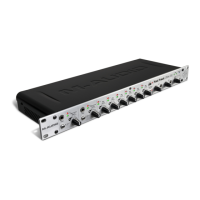built into it. Therefore direct connection to a microphone is not
recommended. Instead run the microphone signal through a
microphone pre-amp (such as the Midiman "Audio Buddy™") and
then connect the pre-amp output to the input of the Delta 1010.
All analog jacks on the Delta 1010 rack-mount chassis are of the 1/4" TRS (Tip-
Ring-Sleeve) variety. The TRS jacks allow connection to either balanced
(typically professional) or unbalanced (typically consumer) connections. +4dBu
balanced configurations provide the highest performance and should be used
whenever possible. However, the Delta 1010’s analog connections support any
combination of balanced and unbalanced, +4dBu and –10dBV signals.
The Digital Monitor Mixer
The Delta 1010 Digital Recording System has a hardware digital audio mixer
built into its PCI controller chip. It accepts digital audio streams from all
hardware inputs and all outgoing software audio devices, mixes them with 36-bit
internal precision and then provides the mixed output to one or more locations.
For the purpose of monitoring, the output of the mixer may be routed to the first
set of Delta 1010 analog outputs (OUT1/OUT2 as a stereo pair) and/or the
S/PDIF digital output. At the same time the mixer may be used for stereo mix-
down, with the mixer’s output recorded into the user’s application software. The
digital audio mixer is configured and controlled by the included Delta Control
Panel Software.
The Patchbay / Router
In addition to the built-in monitor mixer, the Delta 1010 Digital Recording
System includes an output patchbay/router. The patchbay/router allows each
output (analog or digital) to be connected to a variety of input sources. The
1010’s outputs may accept audio from software sources (these output devices are
visible in your audio software applications) or from hardware sources such as the
analog and digital inputs or the monitor mixer. This capability makes the Delta
1010 quite flexible for WAV output, monitoring, or directly connecting inputs to
outputs for system test purposes.
Synchronization
For proper operation, the entire Delta 1010 system is always synchronized to a
single master clock. The master clock is chosen via the Delta Control Panel
software and this clock may be derived from the Delta 1010’s internal crystal
oscillators, S/PDIF In, or Word Clock In. Most of the time the master clock is
taken from the internal crystal oscillators. However, the S/PDIF and Word Clock
options are used in situations where the Delta 1010 must be synchronized to
external digital audio or sample rates derived from an external device.
12
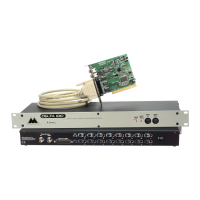
